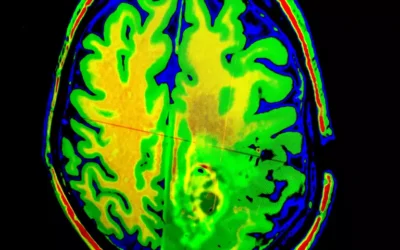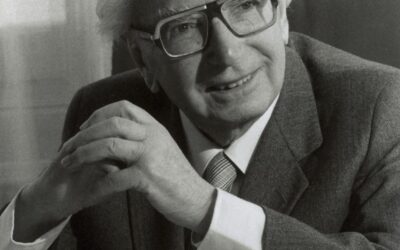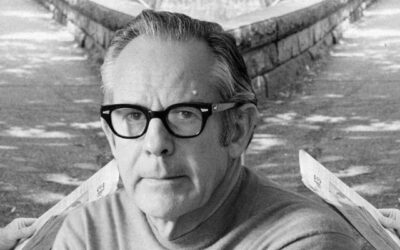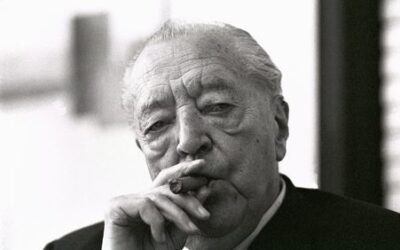
Sonu Shamdasani: Reframing Jung’s Legacy through Historical Scholarship
Sonu Shamdasani, a distinguished professor at University College London and a prolific author, has emerged as one of the most influential figures in the field of Jung scholarship. As a historian of psychology with a particular focus on the life and work of C.G. Jung, Shamdasani has made significant contributions to the understanding and interpretation of Jung’s ideas. His meticulous research, coupled with his unique perspective on the historical context of Jung’s thought, has shed new light on the development of analytical psychology and its impact on contemporary psychoanalytic theory and practice.
- Books: C.G. Jung: A Biography in Books Amazon
- YouTube Lecture: Sonu Shamdasani on Jung’s Red Book
- Interview: In Conversation with Sonu Shamdasani
- Podcast: Shamdasani on Jungian Thought
- Article: Sonu Shamdasani on Jung and History
- Institute: Sonu Shamdasani at UCL
- Research: Publications by Sonu Shamdasani
- Quotes: Sonu Shamdasani Quotes
- Lecture Series: Shamdasani on Jung’s Life
- Biography: Sonu Shamdasani’s Life and Work
Main Ideas:
- Sonu Shamdasani is a prominent historian of psychology and a leading scholar in Jung studies.
- Shamdasani’s early career and intellectual influences, including his PhD from the Wellcome Institute for the History of Medicine, shaped his approach to historical research and understanding of the social and cultural context of scientific ideas.
- Shamdasani’s pioneering research on Jung’s unpublished works has brought to light previously unknown material, deepening our understanding of Jung’s intellectual development.
- Shamdasani played a crucial role in bringing The Red Book to publication, advocating for its release and meticulously editing and annotating the original manuscript.
- Shamdasani’s work has reframed Jung’s relationship to psychoanalysis, highlighting the unique contributions Jung made to the understanding of the human psyche.
- As a member of the Philemon Foundation, Shamdasani has overseen the translation and annotation of numerous volumes of Jung’s Collected Works.
- Shamdasani has interpreted Jung’s ideas for a contemporary audience through his teaching, public lectures, and popular writings, such as C.G. Jung: A Biography in Books.
- While Shamdasani’s contributions to Jung scholarship have been widely recognized, some critics argue that his editorial interventions and emphasis on historical context may shape the interpretation of Jung’s texts.
- Shamdasani’s approach to Jung scholarship combines rigorous historical analysis with an appreciation for the transformative potential of Jung’s thought, offering a model for the study of psychology’s past informing the present.
- Shamdasani’s legacy as a scholar and interpreter of Jung’s work will continue to shape the conversation around analytical psychology and its place in the broader landscape of psychological thought.
Early Career and Intellectual Influences
Shamdasani’s interest in the history of psychology began during his undergraduate studies at the University of Bristol. He went on to earn a PhD in the History of Medicine from the Wellcome Institute for the History of Medicine, where he studied under the guidance of Michael Neve, a renowned historian of psychiatry. This academic background provided Shamdasani with a solid foundation in the methodologies of historical research and a keen understanding of the social and cultural forces that shape the development of scientific ideas.
During his doctoral studies, Shamdasani became increasingly fascinated by the work of C.G. Jung, particularly the ways in which Jung’s ideas were shaped by his engagement with various intellectual and spiritual traditions, including Gnosticism, alchemy, and Eastern philosophy. This interest led Shamdasani to undertake a comprehensive study of Jung’s personal and professional archives, a project that would occupy him for much of his early career.
Pioneering Research on Jung’s Unpublished Works One of Shamdasani’s most significant contributions to Jung scholarship has been his work on Jung’s unpublished manuscripts and correspondence. Through his meticulous research in the Jung archives, Shamdasani has brought to light a wealth of previously unknown material that has deepened our understanding of Jung’s intellectual development and the evolution of his ideas.
Among the most notable of these unpublished works is Jung’s Red Book, a fascinating collection of personal reflections, fantasies, and illustrations that Jung created between 1913 and 1930. Shamdasani played a crucial role in bringing The Red Book to publication, a process that required years of careful negotiation with Jung’s family and a painstaking effort to transcribe and edit the original manuscript.
The Publication of The Red Book
Shamdasani’s involvement with The Red Book began in the 1990s when he was researching the history of Jung’s intellectual development. He recognized the significance of the unpublished manuscript and began advocating for its release to Jung’s family.
The Jung family had long been hesitant to publish the complete Red Book, fearing that its esoteric and highly personal content might be misinterpreted or sensationalized. Shamdasani argued persuasively for the importance of making the full text available to scholars and the general public, emphasizing its crucial role in understanding the foundations of Jung’s later work.
Through patient and persistent dialogue with the Jung family, Shamdasani was able to secure their permission to publish the complete Red Book. He then undertook the monumental task of transcribing and editing the original manuscript, which was written in a combination of German, English, and Latin, and featured numerous illustrations and calligraphic text.
The publication of The Red Book in 2009 was a watershed moment in Jung scholarship. The book offered an unprecedented glimpse into Jung’s creative process and the personal experiences that shaped his psychological theories. Shamdasani’s editorial work, which included extensive annotations and an insightful introductory essay, helped to make this complex and esoteric text accessible to a wide audience.
Reframing Jung’s Relationship to Psychoanalysis
Another significant theme in Shamdasani’s work has been his effort to reframe Jung’s relationship to the broader history of psychoanalysis. In contrast to the prevailing view of Jung as a disciple who broke away from Freud to establish his own school of thought, Shamdasani has argued for a more nuanced understanding of the intellectual and personal dynamics between the two men.
Through his research into the correspondence between Jung and Freud, as well as his analysis of the broader cultural and scientific context of their work, Shamdasani has shown how Jung’s ideas developed in dialogue with and in response to Freudian psychoanalysis. He has also highlighted the ways in which Jung’s later work, particularly his theory of archetypes and the collective unconscious, represented a significant departure from Freudian orthodoxy.
Shamdasani’s scholarship has helped to situate Jung’s work within the broader history of psychoanalytic thought, while also highlighting the unique contributions that Jung made to the understanding of the human psyche. His approach has encouraged a more complex and historically grounded understanding of the relationship between these two seminal figures in the history of psychology.
Editing and Translating Jung’s Collected Works In addition to his work on Jung’s unpublished manuscripts, Shamdasani has also played a key role in the ongoing project to edit and translate Jung’s Collected Works into English. As a member of the editorial committee for the Philemon Foundation, an organization dedicated to preparing Jung’s unpublished works for publication, Shamdasani has overseen the translation and annotation of numerous volumes of Jung’s writings.
This work has required a deep knowledge of Jung’s ideas, as well as a sensitivity to the nuances of language and meaning that can be lost in translation. Shamdasani’s expertise in the history of psychology, combined with his linguistic skills and his familiarity with Jung’s oeuvre, has made him uniquely qualified for this task.
Through his editorial work, Shamdasani has helped to ensure that Jung’s ideas are presented in a clear and accessible manner, while also maintaining the integrity and complexity of the original texts. His efforts have made a significant contribution to the ongoing dissemination and interpretation of Jung’s work, both within the academic community and among the general public.
Sonu Shamdasani and James Hillman: Collaboration and Lament for the Dead
One of the most significant collaborations in Sonu Shamdasani’s career was his work with James Hillman, the influential post-Jungian thinker and founder of archetypal psychology. Shamdasani and Hillman shared a deep interest in the history and development of Jung’s ideas, as well as a commitment to exploring the broader cultural and philosophical implications of depth psychology.
Their collaboration began in the 1990s, when Shamdasani was researching Jung’s unpublished manuscripts and Hillman was working on a book that would eventually become Lament for the Dead: Psychology After Jung’s Red Book (2013). Hillman had long been fascinated by The Red Book and its significance for the evolution of Jung’s thought, and he saw in Shamdasani a kindred spirit who shared his passion for uncovering the hidden depths of Jung’s work.
Lament for the Dead As Shamdasani worked on preparing The Red Book for publication, he and Hillman engaged in a series of conversations about the text and its implications for the future of psychology. These conversations formed the basis for Lament for the Dead, a book-length dialogue between Hillman and Shamdasani that explores the key themes and ideas of The Red Book.
In Lament for the Dead, Hillman and Shamdasani delve into the personal and historical context of Jung’s work, tracing the ways in which his experiences of inner turmoil and spiritual crisis shaped his approach to the psyche. They also explore the broader cultural and philosophical significance of The Red Book, arguing that it represents a profound challenge to the dominant materialist and reductionist worldview of modern Western society.
Throughout the book, Hillman and Shamdasani engage in a lively and wide-ranging dialogue that touches on a variety of topics, from the nature of the unconscious to the role of myth and imagination in human life. They also reflect on the contemporary relevance of Jung’s ideas, suggesting that The Red Book offers a powerful template for the kind of deep introspection and self-exploration that is needed to address the existential challenges of our time.
Impact and Legacy The publication of Lament for the Dead was a major event in the world of depth psychology, bringing together two of the most important figures in contemporary Jungian thought. The book was widely praised for its insight, erudition, and accessibility, and it helped to spark a renewed interest in The Red Book and its significance for the history of psychology.
More broadly, the collaboration between Shamdasani and Hillman represented a powerful example of the kind of interdisciplinary and cross-generational dialogue that is needed to keep Jung’s legacy alive and relevant in the 21st century. By bringing together a historian of psychology and a philosopher of the psyche, they demonstrated the value of a holistic and integrative approach to the study of the mind and its mysteries.
Interpreting Jung for a Contemporary Audience
Shamdasani’s scholarship has not been limited to historical research and textual analysis. He has also been actively engaged in interpreting Jung’s ideas for a contemporary audience, through his teaching, public lectures, and popular writings.
In his book C.G. Jung: A Biography in Books (2012), Shamdasani offers a highly accessible introduction to Jung’s life and work, organized around the major themes and phases of his intellectual development. The book serves as an excellent entry point for readers who may be new to Jung’s ideas, while also providing fresh insights for those who are already familiar with his work.
Shamdasani has also been a frequent public speaker, giving lectures and workshops on Jung’s ideas at universities, conferences, and cultural institutions around the world. His engaging and informative style of presentation has helped to bring Jung’s work to a wider audience, and to stimulate new interest in the relevance of analytical psychology for contemporary society.
Critiques and Controversies
While Shamdasani’s contributions to Jung scholarship have been widely recognized and celebrated, his work has also been the subject of some criticism and controversy. Some scholars have questioned the extent to which Shamdasani’s editorial interventions in the publication of Jung’s unpublished works may have shaped the interpretation of these texts.
Others have argued that Shamdasani’s emphasis on the historical context of Jung’s ideas risks downplaying the enduring psychological and spiritual insights that Jung’s work offers. These critics suggest that a more direct engagement with the experiential and transformative aspects of Jung’s thought is needed, beyond the purely historical or textual analysis that Shamdasani provides.
Despite these critiques, there is no question that Shamdasani’s scholarship has had a profound impact on the field of Jung studies. His rigorous historical research, combined with his commitment to making Jung’s work accessible to a wide audience, has helped to revitalize interest in analytical psychology and to situate Jung’s ideas within the broader intellectual and cultural currents of the 20th century.
Background on The Red Book
The Red Book, or Liber Novus (New Book), is a collection of Jung’s personal writings, illustrations, and reflections spanning from 1913 to 1930. The work is deeply introspective, exploring Jung’s own psychological and spiritual development, and is considered the foundation for many of his later theories and concepts. Jung himself referred to the work as “the numinous beginning” of his “scientific” work in psychology.
Despite its importance, Jung never published The Red Book during his lifetime, considering it too personal and esoteric. After his death in 1961, the manuscript remained in the possession of his family, who were hesitant to release it to the public due to its complexity and the potential for misinterpretation.
Sonu Shamdasani’s interest in The Red Book began in the 1990s when he was researching the history of Jung’s intellectual development. He recognized the significance of the unpublished manuscript and began to advocate for its release.
Convincing the Jung Family
One of Shamdasani’s most significant challenges was persuading Jung’s family, particularly his grandson Ulrich Hoerni, to publish the complete manuscript of The Red Book. The family had previously considered releasing an edited, abridged version based on Jung’s draft manuscript, which omitted many of the more personal and esoteric elements.
Shamdasani argued that the full manuscript was essential for understanding Jung’s thought and the development of his theories. He emphasized the historical and scholarly importance of presenting the work in its entirety, even if some aspects might be challenging for readers.
Through persistent and patient dialogue with the Jung family over several years, Shamdasani was able to build trust and convince them of the merits of publishing the complete Red Book. His deep knowledge of Jung’s work and his commitment to presenting it accurately and respectfully were key factors in gaining the family’s support.
Editing and Contextualizing The Red Book
Once the Jung family agreed to publish the full manuscript, Shamdasani took on the monumental task of editing and contextualizing the work for publication. This involved several key aspects:
- Transcription and Translation: Shamdasani meticulously transcribed Jung’s handwritten manuscript, which was composed in German with occasional passages in English and Latin. He also oversaw the translation of the text into English, ensuring the accuracy and fidelity of the translated material.
- Annotations and Commentary: To help readers navigate the complex and often esoteric content of The Red Book, Shamdasani provided extensive annotations and commentary throughout the text. His notes offer historical context, clarify Jung’s references and allusions, and link the work to Jung’s later theories and writings.
- Introductory Essays: Shamdasani wrote a series of introductory essays for The Red Book, providing a framework for understanding the work’s significance and its place in Jung’s intellectual development. These essays offer invaluable guidance for readers, helping them to approach the text with the necessary background and context.
- Reproduction of Illustrations: The Red Book features numerous illustrations and calligraphic text created by Jung himself. Shamdasani worked closely with publishers to ensure the high-quality reproduction of these images, recognizing their integral role in the work as a whole.
The Publication and Impact of The Red Book
The publication of The Red Book in 2009 was a watershed moment in Jungian scholarship and psychology. The work offers an unprecedented glimpse into Jung’s personal and intellectual development, shedding new light on the origins of his theories and the foundations of analytical psychology.
Shamdasani’s efforts were crucial in bringing this seminal work to a wide audience and ensuring its accurate and faithful presentation. His dedication to the project, spanning over a decade, has made a lasting contribution to the field of Jungian studies and the understanding of Jung’s thought.
The publication of The Red Book has sparked new interest in Jung’s ideas and has led to a reevaluation of his place in the history of psychology. It has also opened up new avenues for research and interpretation, as scholars and practitioners alike grapple with the work’s rich and complex content.
Shamdasani’s Legacy
Sonu Shamdasani’s role in the publication of The Red Book extends beyond his work as an editor and scholar. Through his advocacy and dedication, he has helped to reshape the landscape of Jungian studies and to bring Jung’s ideas to a new generation of readers and thinkers.
Shamdasani’s commitment to presenting Jung’s work in its full depth and complexity, without simplification or reduction, has set a new standard for scholarship in the field. His approach emphasizes the importance of engaging with Jung’s ideas on their own terms, while also situating them within their historical and intellectual context.
In addition to his work on The Red Book, Shamdasani has made significant contributions to the study of Jung’s life and thought more broadly. His numerous books and articles have explored topics such as the history of psychotherapy, the relationship between psychology and religion, and the intellectual and cultural context of Jung’s work.
Through his teaching and mentorship, Shamdasani has also helped to foster a new generation of Jungian scholars and practitioners. His influence can be seen in the work of his students and colleagues, who continue to explore and extend the insights of analytical psychology in new and innovative ways.
The publication of The Red Book marks a turning point in the history of psychology and a testament to the enduring power of Jung’s vision. It is a reminder of the depth and complexity of the human psyche, and of the ongoing relevance of Jung’s insights for our understanding of ourselves and our world. Sonu Shamdasani’s role in bringing this work to light is a legacy that will continue to inspire and inform scholars, practitioners, and seekers for generations to come.
Lectures and Presentations
Following the publication of The Red Book, Shamdasani embarked on a series of lectures and presentations around the world, introducing the work to audiences and exploring its themes and ideas in depth. These lectures provided a valuable opportunity for scholars, students, and interested readers to engage with the text and to hear directly from one of its foremost interpreters.
Shamdasani’s lectures often focused on the historical and intellectual context of The Red Book, situating it within the broader trajectory of Jung’s life and thought. He also explored the work’s relationship to other traditions and disciplines, such as literature, art, and religion, highlighting the ways in which Jung’s ideas resonated with and drew upon these fields.
Interviews and Discussions
In addition to his lectures, Shamdasani participated in numerous interviews and discussions about The Red Book, both in print and online. These conversations provided a more informal and accessible way for readers to engage with the work and to hear Shamdasani’s insights and reflections.
In these interviews, Shamdasani often emphasized the importance of approaching The Red Book on its own terms, without imposing preconceived notions or interpretations upon it. He encouraged readers to engage with the work directly, to grapple with its challenges and ambiguities, and to allow it to speak to them in its own unique voice.
Scholarly Reception and Critique
The publication of The Red Book sparked a wave of new scholarship and interpretation within the field of Jungian studies and beyond. Shamdasani’s work played a key role in shaping the scholarly reception of the text and in guiding the ongoing debates and discussions surrounding it.
Some scholars praised Shamdasani’s approach, emphasizing the importance of presenting The Red Book in its complete and unabridged form, and of providing the necessary context and commentary to make it accessible to a wide audience. They saw his work as a model of scholarly rigor and integrity, and as a vital contribution to the understanding of Jung’s life and thought.
Others, however, raised questions and critiques about Shamdasani’s approach, arguing that his emphasis on the historical and contextual aspects of The Red Book risked overshadowing its more personal and experiential dimensions. Some critics suggested that Shamdasani’s annotations and commentary imposed too much of a scholastic framework upon the text, and that they might inadvertently limit or constrain readers’ own engagement with it.
Despite these debates, there is no question that Shamdasani’s work has had a profound and lasting impact on the field of Jungian studies, and that it has helped to establish The Red Book as a central and indispensable text for anyone seeking to understand Jung’s life and thought.
Ongoing Legacy and Influence
Sonu Shamdasani’s Major Projects and Collaborations
Throughout his career, Sonu Shamdasani has been involved in numerous projects and collaborations that have significantly contributed to the field of Jung scholarship and the history of psychology. In addition to his work on The Red Book and his collaboration with James Hillman, Shamdasani has been involved in several other major initiatives that have helped to shape the contemporary understanding of Jung’s life and work.
The Philemon Foundation and the Publication of Jung’s Collected Works
One of Shamdasani’s most significant ongoing projects is his work with the Philemon Foundation, a non-profit organization dedicated to preparing and publishing the complete works of C.G. Jung. As a member of the foundation’s editorial board, Shamdasani has been involved in the translation, editing, and annotation of numerous volumes of Jung’s writings, including his seminars, lectures, and correspondence.
Shamdasani’s work with the Philemon Foundation has been crucial in making Jung’s ideas accessible to a wider audience and ensuring that his legacy is preserved for future generations. Through his meticulous scholarship and attention to detail, Shamdasani has helped to establish new standards for the publication and interpretation of Jung’s work, and has contributed to a more complete and accurate understanding of his intellectual development.
The Black Books and the Origins of Jung’s Thought Another major project that Shamdasani has been involved in is the publication of Jung’s Black Books, a series of private journals and notebooks that Jung kept between 1913 and 1932. These notebooks, which were only recently discovered and made available to scholars, provide a fascinating glimpse into Jung’s inner world and the origins of his psychological theories.
Shamdasani has been instrumental in bringing the Black Books to publication, working closely with the Jung family and the Philemon Foundation to ensure that the notebooks are presented in a way that is both accurate and accessible. His work on the Black Books has helped to shed new light on Jung’s creative process and the personal experiences that shaped his approach to the psyche.
The Foundation of the Wellcome Institute’s Centre for the History of Psychological Disciplines
In addition to his work on Jung, Shamdasani has also made significant contributions to the broader field of the history of psychology. One of his most notable achievements in this regard was his role in founding the Centre for the History of Psychological Disciplines at the Wellcome Institute for the History of Medicine in London.
As the director of the centre, Shamdasani helped to establish a new program of research and teaching that focused on the historical and cultural context of psychological ideas and practices. He also worked to build a network of scholars and institutions around the world who were interested in exploring the history of psychology from a variety of perspectives.
Through his work at the Wellcome Institute, Shamdasani helped to legitimize the study of the history of psychology as a serious academic discipline, and to create new opportunities for collaboration and exchange among scholars working in this field.
Collaboration with the Museum of Modern Art on The Red Book Exhibition
In addition to his scholarly work, Shamdasani has also been involved in several high-profile public engagement projects related to Jung and depth psychology. One of the most notable of these was his collaboration with the Museum of Modern Art in New York City on an exhibition dedicated to The Red Book.
Shamdasani worked closely with the museum’s curatorial team to develop the exhibition, which featured a selection of pages from The Red Book alongside other works of art and artifacts that helped to contextualize Jung’s creative process. He also contributed to the exhibition catalogue and participated in a series of public programs and events related to the show.
The Red Book exhibition was a major cultural event that helped to introduce Jung’s work to a wider audience and to generate new interest in the history and significance of depth psychology. Shamdasani’s involvement in the project demonstrated his commitment to public engagement and his belief in the power of art and imagination to illuminate the mysteries of the psyche.
Advising on Films and Documentaries Shamdasani has also served as an advisor and consultant on several films and documentaries related to Jung and the history of psychology. His expertise has been sought out by filmmakers and producers looking to create accurate and compelling portraits of Jung’s life and work.
One notable example of this was his involvement in the BBC documentary “The Century of the Self” (2002), which explored the influence of Freudian and post-Freudian ideas on the development of modern consumer culture. Shamdasani served as a key advisor on the project, helping to ensure that the film’s portrayal of Jung and his ideas was historically accurate and contextually relevant.
The International Association for Analytical Psychology Shamdasani has also been an active member of the International Association for Analytical Psychology (IAAP), the main professional organization for Jungian analysts and scholars. As a member of the IAAP’s executive committee and a regular presenter at its conferences and events, Shamdasani has helped to shape the direction and focus of contemporary Jungian thought.
Through his work with the IAAP, Shamdasani has been able to connect with a global network of Jungian scholars and practitioners, and to contribute to ongoing debates and discussions about the future of analytical psychology. He has also been involved in efforts to promote greater diversity and inclusion within the Jungian community, and to foster greater dialogue and collaboration between Jungian scholars and practitioners from different cultural and intellectual traditions.
Sonu Shamdasani’s major projects and collaborations have had a profound impact on the field of Jung scholarship and the broader study of the history of psychology. Through his work with the Philemon Foundation, the Black Books, the Wellcome Institute, the Museum of Modern Art, and the International Association for Analytical Psychology, Shamdasani has helped to deepen our understanding of Jung’s life and work, and to create new opportunities for scholarship, collaboration, and public engagement.
More than a decade after the initial publication of The Red Book, Sonu Shamdasani’s work continues to shape and inform the ongoing reception and interpretation of the text. His insights and perspectives have become touchstones for scholars and readers alike, and his commitment to presenting Jung’s work in its full depth and complexity remains a model for the field.
Shamdasani’s influence can be seen in the growing body of scholarship and commentary surrounding The Red Book, as well as in the wider resurgence of interest in Jung’s ideas and their contemporary relevance. His work has helped to open up new avenues for research and exploration, and has encouraged a more nuanced and historically grounded approach to the study of Jung’s life and thought.
At the same time, Shamdasani’s legacy extends beyond the narrow confines of Jungian scholarship, and speaks to broader questions about the role and responsibility of the scholar in presenting and interpreting important cultural and intellectual texts. His work on The Red Book demonstrates the vital importance of scholarly rigor, integrity, and commitment in bringing such works to light and making them accessible to a wider audience.
In this sense, Shamdasani’s work stands as a testament to the enduring power and significance of Jung’s ideas, and to the ongoing relevance of depth psychology for our understanding of ourselves and our world. It is a reminder of the vital role that scholarship can play in preserving and transmitting important cultural and intellectual traditions, and in ensuring that they remain a living and dynamic presence in our collective consciousness.
Bibliography:
Bair, D. (2003). Jung: A Biography. Little, Brown and Company.
Casement, A. (Ed.). (2001). Carl Gustav Jung: Critical Assessments. Routledge.
Jung, C. G. (2009). The Red Book: Liber Novus. (S. Shamdasani, Ed.). W. W. Norton & Company.
Jung, C. G. (1953-1991). The Collected Works of C. G. Jung. (H. Read, M. Fordham, G. Adler, & W. McGuire, Eds.). Princeton University Press.
Shamdasani, S. (1998). Cult Fictions: C. G. Jung and the Founding of Analytical Psychology. Routledge.
Shamdasani, S. (2003). Jung and the Making of Modern Psychology: The Dream of a Science. Cambridge University Press.
Shamdasani, S. (2005). Jung Stripped Bare: By His Biographers, Even. Karnac Books.
Shamdasani, S. (2012). C. G. Jung: A Biography in Books. W. W. Norton & Company.
Shamdasani, S. (2015). Remembering Jung: Interviews and Encounters. Princeton University Press.
Shamdasani, S. (2020). The Black Books of C.G. Jung (1913-1932). Stiftung der Werke von C. G. Jung.
Timeline of Sonu Shamdasani’s Life:
1962: Born in Singapore
1984: Graduated with a B.A. from the University of Bristol
1987: Earned a Ph.D. in the History of Medicine from the Wellcome Institute for the History of Medicine
1990s: Began research on Jung’s unpublished manuscripts and advocating for the release of The Red Book
1998: Published Cult Fictions: C. G. Jung and the Founding of Analytical Psychology
2003: Published Jung and the Making of Modern Psychology: The Dream of a Science
2005: Published Jung Stripped Bare: By His Biographers, Even
2009: The Red Book: Liber Novus published after Shamdasani’s extensive editing and annotation
2012: Published C. G. Jung: A Biography in Books
2015: Published Remembering Jung: Interviews and Encounters
2020: Published The Black Books of C.G. Jung (1913-1932)
Present: Professor at University College London and a leading scholar in Jung studies
Read More Depth Psychology Articles:
Taproot Therapy Collective Podcast
Jungian Innovators


























0 Comments